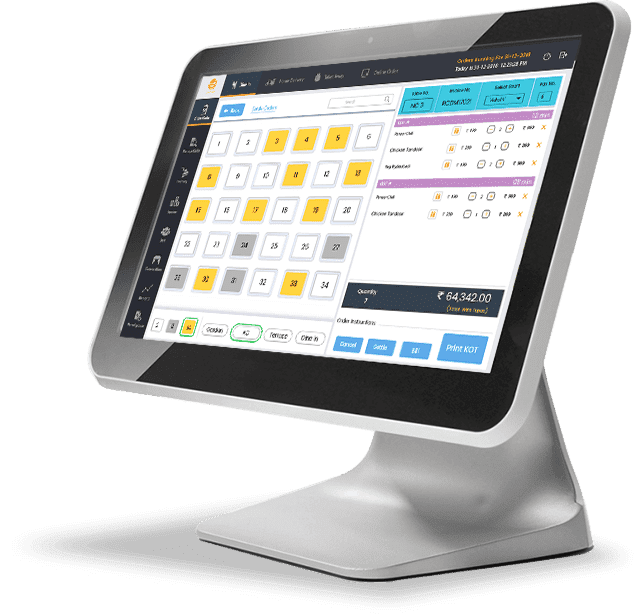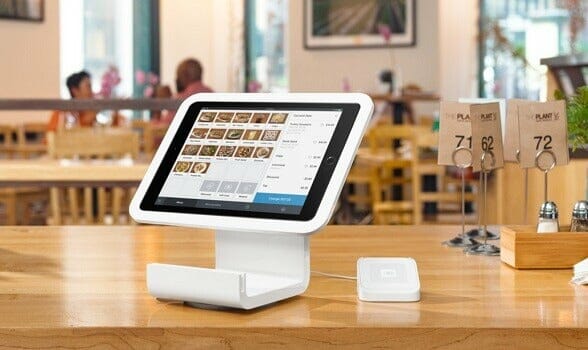Just How POS System Works: A Comprehensive Overview for Entrpreneurs
A POS system acts as a necessary device for modern-day companies, integrating different elements to enhance procedures. It incorporates equipment like barcode scanners and software program up for sale tracking. This system not only processes purchases yet additionally takes care of supply and examines consumer actions. Comprehending its performance can considerably affect a service's performance and decision-making. What are the crucial elements that add to this performance? Checking out these elements provides valuable understandings.
Recognizing the Parts of a POS System
A Factor of Sale (POS) system is made up of several essential parts that function together to facilitate purchases and manage business operations. At its core, the equipment consists of gadgets such as a cash register, barcode scanner, invoice printer, and repayment terminal, all important for processing sales (Restaurant POS Software). The software program element manages supply, sales tracking, and consumer information, offering important understandings for business decisions.Additionally, databases store purchase records and client information, making certain information stability and safety. Network connectivity makes it possible for real-time updates and access to cloud-based services, boosting functional effectiveness. User interfaces, created for ease of usage, permit personnel to browse the system swiftly, reducing training time. With each other, these parts produce a cohesive system that enhances the sales procedure, enhances consumer service, and help in effective administration of business resources. Understanding these parts is essential for entrepreneur looking for to optimize their POS systems
Just How Sales Purchases Are Processed
When a consumer makes a decision to make a purchase, the sales purchase initiates a collection of systematic actions within the POS system. The cashier inputs the things being acquired, which are scanned through a barcode reader or by hand gotten in. This action recovers item information, consisting of rates and appropriate tax obligations, from the system's database.Next, the customer exists with the overall quantity due. The POS system then refines the payment, whether through money, charge card, or mobile payment methods. For electronic payments, the POS securely communicates with payment processors to authorize and verify the transaction.Once the payment is verified, the system creates an invoice, which can be published or sent out electronically. This receipt works as proof of purchase for the customer. The deal information is videotaped in the system, ensuring accurate sales records and monetary monitoring for the organization.
Supply Administration and Tracking
Effective supply administration and tracking are vital components of a POS system, as they assure that services keep excellent stock levels and decrease inconsistencies. A robust POS system permits real-time supply updates, mirroring sales and returns instantly. This allows local business owner to keep track of supply degrees precisely, making sure that prominent items are readily available while preventing overstocking of much less preferred products.Additionally, progressed POS systems use features such as automated stock informs and reorder suggestions, simplifying the purchase procedure. Barcoding and RFID innovation improve precision in tracking supply motion, decreasing human error. Considerable reporting tools give insights into supply turnover prices, assisting businesses make educated choices about acquiring and product offerings. Ultimately, efficient inventory monitoring with a POS system not just enhances functional effectiveness yet also improves consumer complete satisfaction by guaranteeing product schedule.

Evaluating Client Information and Insights
Customer data evaluation serves as an effective tool for services utilizing a POS system. By gathering and analyzing purchase information, organizations can reveal useful understandings concerning consumer actions and choices. This evaluation allows them to recognize acquiring fads, peak shopping times, and preferred items, therefore educating stock decisions and advertising and marketing strategies.Additionally, companies can sector their client base, permitting individualized advertising efforts that satisfy particular demographics or acquiring practices. Understanding consumer loyalty patterns also aids in establishing targeted promotions and rewards programs.The information obtained from a POS system can likewise reveal understandings right into client feedback, making it possible for organizations to make enlightened choices relating to item offerings and service improvements. have a peek here Eventually, leveraging consumer data efficiently can improve the total shopping experience, foster client fulfillment, and drive revenue development.
Advantages of Executing a POS System
Applying a POS system provides various benefits that can considerably boost service procedures. To start with, it streamlines transaction processes, reducing wait times and improving customer satisfaction. By automating sales processes, businesses can reduce human error and guarantee accurate record-keeping. Additionally, a POS system provides valuable information analytics, making it possible for proprietors to track sales patterns and stock levels in real-time. This insight sustains educated decision-making, helping to enhance supply monitoring and marketing strategies.Moreover, many POS systems integrate with other company tools, such as accounting software program, streamlining monetary management. Enhanced staff member monitoring functions, such as tracking hours and performance, further add to operational efficiency.Lastly, the implementation of a POS system can bring about boosted income through boosted client experiences and strategic understandings, ultimately promoting company growth and sustainability.
Frequently Asked Questions
What Sorts Of Companies Can Take Advantage Of a POS System?

Exactly how Much Does a POS System Typically Cost?
The cost of a POS system normally varies from a couple of hundred to numerous thousand bucks, depending on features, hardware, and software program - Restaurant POS Software. Organizations must consider ongoing fees for maintenance, support, and deal processing when budgeting

Can I Integrate a POS System With Existing Software?
Integrating a POS system with existing software is typically viable. Many systems provide APIs or integrated compatibility functions, allowing companies to enhance procedures and boost performance by connecting different software program applications successfully.
What Training Is Needed for Personnel to Utilize a POS System?
Training for personnel to use a POS system generally consists of understanding software program performances, refining click this link purchases, handling inventory, and Your Domain Name taking care of client interactions - Restaurant POS Software. Practical demonstrations and hands-on technique sessions boost effectiveness and confidence in operation the system efficiently
What Takes place if the Web Drops While Using a POS System?
If the internet goes down throughout POS system use, purchases may be interrupted. Many systems use offline capabilities, enabling standard procedures to proceed, however full functionality, consisting of real-time inventory updates, will certainly be restricted.